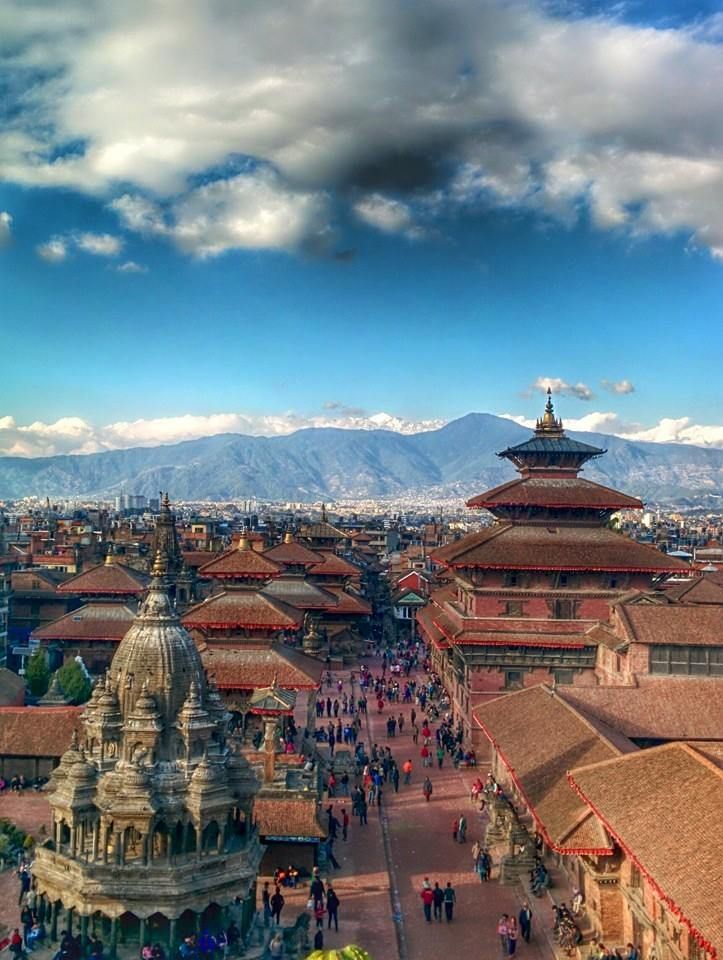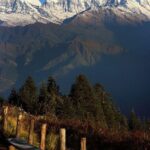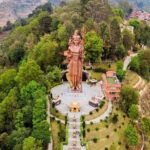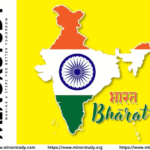Introduction
Kathmandu Durbar Square, located in the heart of Kathmandu, Nepal, is a UNESCO World Heritage Site and a vibrant center of Nepalese history, culture, and architecture. Known for its pagoda-style temples, intricately carved palaces, and bustling streets, it is a must-visit destination for travelers seeking cheap vacation ideas rich in heritage and culture.
- Introduction
- History of Kathmandu Durbar Square
- Fascinating Facts About Kathmandu Durbar Square
- Timeline of Kathmandu Durbar Square
- Significance of Kathmandu Durbar Square
- 1. Cultural Significance
- 2. Religious Importance
- 3. Tourism & Economy
- 4. Educational Value
- 5. Community Pride
- Observance & Cultural Activities
- Wishing at Kathmandu Durbar Square
- Daily Life Impact
- FAQs About Kathmandu Durbar Square
- Important Tips for Visitors
- Importance in Society
- Conclusion
The square is a living museum, reflecting centuries of royal history, religious practices, and Newar craftsmanship. From Hanuman Dhoka Palace to Kumari Ghar, every corner tells a story of Nepalese art, spirituality, and social life.
This guide explores history, fascinating facts, timeline, significance, observance, wishing, FAQs, daily life impact, and societal importance, written in a human-friendly, immersive style.
History of Kathmandu Durbar Square
Ancient Royal Center: Served as the palace complex of the Malla kings, who ruled Kathmandu from the 12th to 18th centuries.
Architectural Heritage: Showcases Newar architecture with pagoda-style temples, courtyards, and wood carvings.
Religious Hub: Houses important temples like Taleju Bhawani Temple, Kumari Ghar, and many smaller shrines dedicated to Hindu gods.
Modern Era: Recognized as a UNESCO World Heritage Site for its cultural and historical significance.
Fun Fact: Kathmandu Durbar Square has over 50 major temples and monuments, making it one of the densest concentrations of historic architecture in Nepal.
Fascinating Facts About Kathmandu Durbar Square
Royal Palace Complex: Includes Hanuman Dhoka Palace, which was the residence of Nepalese kings until 1886.
Kumari Ghar: Home to the Living Goddess Kumari, a unique tradition where a young girl is revered as a deity.
Pagoda Temples: Features Taleju Temple, Kasthamandap, and Jagannath Temple, showcasing traditional Nepalese craftsmanship.
Historical Artifacts: Houses statues, inscriptions, and ancient relics dating back centuries.
Festivals & Ceremonies: Central to festivals like Indra Jatra, Dashain, and Kumari Jatra, where locals and tourists gather in large numbers.
Earthquake Resilience: The square has survived multiple earthquakes, including the devastating 2015 quake, with ongoing restoration efforts.
Cultural Hub: Offers street performances, markets, and artisan demonstrations, reflecting vibrant local life.
Tourist-Friendly: Accessible with guided tours, photography opportunities, and cultural workshops.
Timeline of Kathmandu Durbar Square
12th–18th Century: Constructed and developed by Malla kings; major temples and palaces built.
18th Century: Shah dynasty continues to use the square as a royal and administrative center.
20th Century: Recognized for its historical and cultural significance; preservation efforts begin.
2015: Earthquake damages many monuments; international restoration projects initiated.
Present: Fully restored with ongoing conservation, attracting millions of tourists annually.
Significance of Kathmandu Durbar Square
1. Cultural Significance
Preserves Newar architecture, ancient temples, royal history, and traditional rituals, serving as a living cultural museum.
2. Religious Importance
Houses Hindu and Buddhist temples, supporting daily worship, festivals, and spiritual learning.
3. Tourism & Economy
Boosts local economy through guided tours, handicraft markets, restaurants, and photography services.
4. Educational Value
Provides insight into Nepalese history, architecture, religion, and social traditions, enriching students, historians, and travelers.
5. Community Pride
Strengthens heritage preservation, cultural pride, and local identity, encouraging intergenerational knowledge transfer.
Observance & Cultural Activities
Festivals: Indra Jatra, Dashain, and Kumari Jatra celebrate royal traditions and religious rituals.
Rituals: Daily worship, offerings, and processions keep religious and cultural practices alive.
Artisan Markets: Local craftspeople sell wood carvings, metal statues, and handmade souvenirs.
Guided Cultural Tours: Offer immersive experiences into temple histories, festivals, and traditional practices.
Wishing at Kathmandu Durbar Square
Visitors can engage in traditional wishing rituals:
🕉️ “May peace, prosperity, and spiritual growth bless my journey.”
🌸 “Wishing for cultural understanding, happiness, and respect for traditions.”
🏯 “May Kathmandu Durbar Square inspire appreciation for history, art, and human creativity.”
These practices connect visitors to the spiritual and historical essence of the site.
Daily Life Impact
Kathmandu Durbar Square influences locals, tourists, and society:
For Visitors: Offers cultural immersion, photography, historical learning, and spiritual experiences.
For Locals: Supports guides, artisans, vendors, and hospitality services, sustaining livelihoods.
For Society: Promotes heritage conservation, cultural awareness, and tourism-driven economy.
FAQs About Kathmandu Durbar Square
Q1: What are the must-see attractions?
A: Hanuman Dhoka Palace, Kumari Ghar, Taleju Bhawani Temple, Kasthamandap, and various pagoda temples.
Q2: How long should I spend here?
A: 2–4 hours for a thorough exploration, or half a day including cultural experiences and markets.
Q3: Is it budget-friendly?
A: Yes, entry fees are affordable, and local street food, souvenirs, and guided tours suit budget travelers.
Q4: Are photography and videography allowed?
A: Yes, but respect temple rules and areas with restricted access.
Q5: Can I visit during festivals?
A: Absolutely! Festivals provide vibrant, immersive cultural experiences but may be crowded.
Important Tips for Visitors
Dress modestly when entering temples.
Hire a licensed guide for historical and cultural insights.
Carry water and wear comfortable walking shoes.
Visit early morning or late afternoon to avoid crowds and get better lighting.
Respect ongoing restoration work and local customs.
Importance in Society
Kathmandu Durbar Square is a cultural, spiritual, and economic landmark:
Heritage Preservation: Maintains ancient architecture, rituals, and festivals.
Economic Support: Sustains local artisans, guides, and hospitality services.
Educational Hub: Offers learning opportunities about history, art, and religion.
Spiritual Center: Encourages reflection, mindfulness, and religious appreciation.
Community Identity: Strengthens cultural pride and heritage awareness.
Conclusion
Kathmandu Durbar Square is more than a historical site; it is a living testament to Nepalese heritage, spirituality, and artistry. Affordable, vibrant, and culturally rich, it offers travelers a deep connection to history, local life, and spiritual practices.
🕉️ Wishing for You: May your visit to Kathmandu Durbar Square inspire curiosity, cultural appreciation, and meaningful memories, letting every temple, courtyard, and festival enrich your journey with knowledge, wonder, and human connection.








